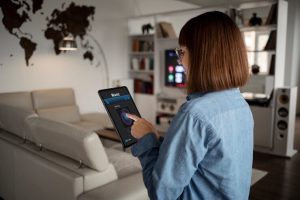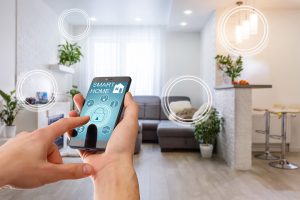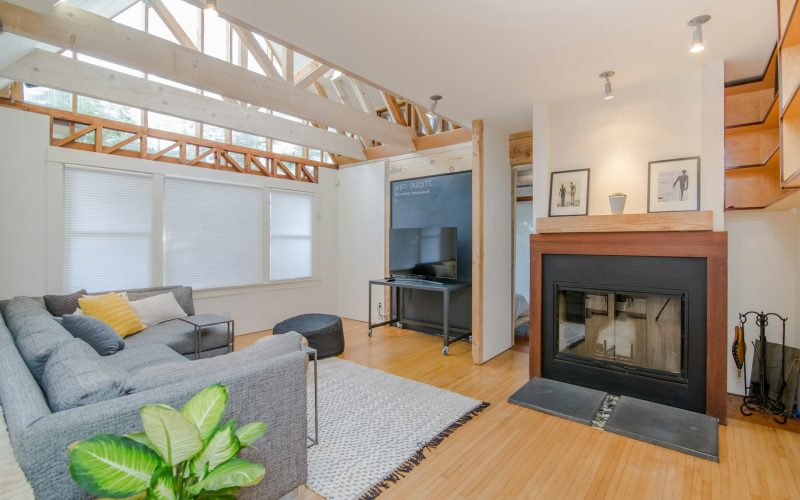In the last decade, smart home technology has evolved from a futuristic concept to a widely adopted household feature. As more people embrace the convenience, security, and energy-saving benefits of smart homes, the technology itself has advanced, with new innovations regularly hitting the market. This article will explore the latest trends in smart home technology, the benefits of smart home systems, real-world applications, and recent case studies showcasing how these technologies are transforming lives.
Latest Trends in Smart Home Technology

AI-Driven Home Automation:
Artificial intelligence is becoming an integral part of the smart home landscape. AI-powered devices are now capable of learning user habits, adjusting preferences automatically, and even predicting future needs. For example, Google Nest and Amazon Alexa’s recent AI upgrades have enabled these devices to recognize patterns and proactively adjust heating, lighting, and even recommend actions for optimal energy efficiency.
Interoperability with Matter Protocol:
One of the significant advancements in 2023 is the adoption of the Matter protocol, a new standard that aims to make smart home devices compatible across platforms like Google, Apple, Amazon, and Samsung. Matter helps overcome previous connectivity barriers, allowing users to control their devices seamlessly, regardless of the brand.
Smart Security Enhancements:

Security has always been a key focus of smart home technology, but recent updates have taken it to a new level. Devices like the Ring Doorbell and Google Nest Secure have incorporated AI-based facial recognition, real-time monitoring, and advanced motion detection, offering users improved security and peace of mind.
Sustainable and Energy-Saving Devices:
With increasing environmental concerns, manufacturers are focusing on making devices that conserve energy. Smart thermostats, energy-efficient lighting, and water management systems, such as the Rachio Smart Sprinkler, help reduce energy consumption and optimize resource use, aligning with global sustainability goals.
Health and Wellness Integration:

Post-pandemic, smart home devices have increasingly focused on health and wellness. Air purifiers, humidity controllers, and even AI-powered wellness mirrors like the CareOS Themis Mirror, which analyzes skin conditions and tracks health metrics, are becoming popular additions to smart homes.
Benefits of Smart Home Technology
Enhanced Convenience:
Smart homes streamline daily tasks. With automation and voice commands, users can control lighting, temperature, security, and entertainment from their devices or even remotely. This enhances comfort and frees up time for other activities.
Improved Security:
Security-focused devices like smart cameras, doorbells, and locks provide real-time alerts, motion detection, and even remote access. This minimizes risks and ensures the safety of homes, especially for frequent travelers.
Energy Efficiency and Cost Savings:
Many smart home devices, particularly thermostats and lighting systems, are designed to be energy-efficient. They can reduce energy usage by learning a household’s habits and adjusting settings accordingly, leading to reduced energy bills.
Remote Accessibility:

Smart homes offer remote access via smartphone apps, allowing users to monitor and control their home settings from anywhere. This is particularly beneficial for managing security or adjusting settings to reduce energy consumption while away.
Health and Wellness:
With smart air purifiers, sleep monitors, and fitness devices, smart homes contribute to healthier lifestyles. Real-time health monitoring and wellness tracking are convenient features, especially as many prioritize health.
Examples of Smart Home Devices and Applications
Google Nest Thermostat:
Known for its learning abilities, the Nest Thermostat can automatically adjust based on user habits and even predict when a home will be occupied or empty, helping save energy without manual adjustments.
Philips Hue Lighting System:
A leader in smart lighting, Philips Hue allows users to adjust lighting remotely and set ambiance through customizable color and brightness options, all while optimizing energy use.
Ring Video Doorbell:
This device offers real-time notifications and video monitoring, ensuring users are always aware of visitors and potential intrusions, even while away from home.
Samsung SmartThings Hub:

This hub enables users to control multiple devices on a single platform, which is particularly useful for creating and managing custom automation routines across different brands and devices.
Ecobee Smart Thermostat:
Similar to the Google Nest, Ecobee is an AI-driven thermostat that adjusts heating and cooling based on user habits. Its remote sensors can detect occupancy, optimizing energy use throughout the home.
Case Studies in Smart Home Technology
Case Study: Energy Savings with Google Nest at Sharmans Cross Apartments, London
In 2022, a London apartment complex implemented Google Nest thermostats in all units, aiming to reduce the energy footprint and heating costs. Over six months, residents reported an average 15% decrease in their energy bills. Nest’s ability to learn user habits and adjust settings accordingly not only improved energy savings but also contributed to the property’s green certification goals.
Case Study: Enhanced Security with Ring in Chicago Neighborhood
A neighborhood in Chicago introduced a community-wide Ring Doorbell initiative, where residents installed smart doorbells with integrated security features. Following the installation, the area experienced a 30% drop in property-related crimes. Ring’s real-time monitoring and video evidence played a crucial role in deterring potential incidents, showcasing how smart security can transform neighborhood safety.
Case Study: Water Conservation with Rachio Smart Sprinklers in California
In drought-prone California, a housing community integrated Rachio Smart Sprinklers to optimize water usage based on weather patterns and soil moisture. The Rachio system adjusts water output based on environmental data, conserving water resources significantly. In one year, the community saved over 1 million gallons of water, underscoring the importance of smart home technology in environmental conservation.
Future Prospects of Smart Homes
As more users adopt smart home systems, the future points toward more interconnected and AI-powered solutions. With Matter ensuring smoother device compatibility, we can expect streamlined user experiences across platforms. Additionally, as smart homes continue to integrate sustainable solutions, they will contribute to broader environmental conservation goals.
Incorporating wellness tracking and health-monitoring devices, the smart home of the future promises not only convenience but also improved well-being for its occupants. Furthermore, data privacy and security will remain paramount as more users rely on these systems for personal and household security.
Smart homes are no longer a luxury but a mainstream feature that enhances daily life. By automating routine tasks, improving energy efficiency, and contributing to wellness, smart home technology is shaping how we live, work, and interact within our homes. As innovation in this space continues, we’re likely to see even more sophisticated devices and systems, making our homes smarter and more responsive to our needs than ever before.










